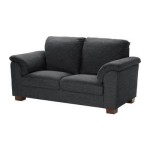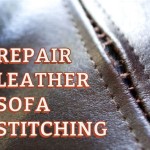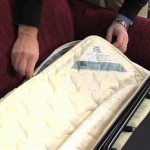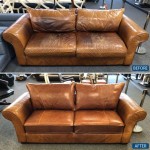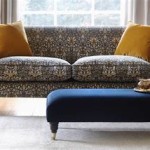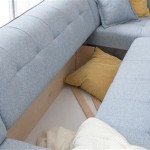```html
The Best Comfortable Sectional Sofa: A Comprehensive Guide
A sectional sofa represents a significant investment in home comfort and functionality. Unlike traditional sofas, sectional sofas offer modularity, allowing customization to fit various room layouts and accommodating diverse seating needs. Comfort is a primary consideration when selecting a sectional, influencing not only relaxation but also overall satisfaction with the purchase. This article explores key features, materials, and design elements that contribute to the comfort of a sectional sofa, providing a detailed guide for informed decision-making.
Understanding the Importance of Frame Construction
The foundation of any comfortable sectional sofa lies in its frame. The frame provides structural support and determines the sofa's longevity. Hardwood, particularly kiln-dried hardwood, is widely regarded as the superior material for sofa frames. Kiln-drying removes moisture from the wood, preventing warping, cracking, and other structural issues that can compromise the sofa's comfort and stability over time. Softwood frames, while more affordable, are generally less durable and may not withstand the rigors of daily use, leading to sagging and reduced comfort. The joinery methods employed in constructing the frame also play a crucial role. Corner-blocking, where wooden blocks are secured to the corners of the frame with screws and glue, reinforces the structure and prevents wobbling. Dovetail joints and mortise-and-tenon joints are also indicative of high-quality craftsmanship and contribute to a more robust and comfortable sofa.
Beyond the materials themselves, the frame design affects comfort. A well-designed frame will distribute weight evenly, preventing pressure points and ensuring consistent support across the seating surface. Consider the height of the frame in relation to the cushion depth. A frame that is too low may result in a seating position that is difficult to get in and out of, while a frame that is too high may feel awkward. The frame should also be free of sharp edges or protrusions that could damage the upholstery or cause discomfort.
Delving into Cushion Fill Options
The cushion fill is arguably the most important factor in determining the comfort of a sectional sofa. Various fill options offer different levels of support, softness, and durability. Understanding these options is crucial for selecting a sectional that meets individual preferences and needs.
Foam: Foam cushions are a popular choice due to their affordability and versatility. Different densities of foam provide varying levels of support. High-density foam is firmer and more durable, offering excellent support for individuals who prefer a more structured seating experience. Low-density foam is softer but may break down more quickly over time. Memory foam conforms to the body's shape, providing customized comfort and pressure relief. A combination of foam densities is often used to achieve a balance of support and softness. For example, a high-density foam core wrapped in a layer of memory foam provides both support and cushioning comfort.
Down: Down cushions are known for their luxurious softness and plush feel. They conform to the body and provide exceptional comfort. However, down cushions require regular fluffing to maintain their shape and prevent clumping. They also tend to be more expensive than foam cushions and may not be suitable for individuals with allergies. A down-feather blend offers a compromise between the luxurious feel of down and the affordability and durability of feathers.
Polyester Fiberfill: Polyester fiberfill is a synthetic material that is relatively inexpensive and hypoallergenic. It provides a soft, comfortable feel but tends to flatten and lose its shape over time. Fiberfill cushions require regular plumping to maintain their loft. While less durable than foam or down, fiberfill can be a suitable option for individuals on a budget or those with allergies.
Springs: While not the primary cushion fill, springs play a critical role in providing support and preventing sagging, especially in seat cushions. Pocketed coil springs, individually wrapped in fabric, offer excellent support and minimize motion transfer. Sinuous springs, also known as zig-zag springs, are another common option. They are more affordable than pocketed coil springs but may not provide the same level of support and durability.
The ideal cushion fill depends on individual preferences and priorities. Individuals who prioritize support and durability may prefer high-density foam or a foam core with pocketed coil springs. Those who prioritize luxurious softness may opt for down cushions. A combination of different fill materials can provide a balanced and comfortable seating experience.
Evaluating Upholstery Materials for Comfort and Durability
The upholstery material significantly impacts the comfort and durability of a sectional sofa. Different fabrics offer varying levels of softness, texture, and stain resistance. Selecting the right upholstery material is essential for ensuring both comfort and longevity.
Leather: Leather is a luxurious and durable upholstery material that develops a unique patina over time. It is naturally breathable and becomes softer with age. However, leather can be expensive and requires regular conditioning to maintain its suppleness and prevent cracking. Different types of leather offer varying levels of durability and price. Top-grain leather is considered the highest quality and is the most durable. Split-grain leather is less expensive but also less durable. Bonded leather is made from scraps of leather and polyurethane and is the least expensive option. While leather offers a visually appealing and comfortable option, it is important to consider the specific type of leather and its maintenance requirements.
Linen: Linen is a natural fiber that is breathable and comfortable. It is also relatively durable and resistant to pilling. However, linen wrinkles easily and may require more frequent cleaning than other fabrics. Linen is a good option for individuals who prefer a natural, relaxed look and are willing to accept some wrinkling.
Cotton: Cotton is a soft and comfortable fabric that is relatively inexpensive. It is also easy to clean and maintain. However, cotton is not as durable as other fabrics and may fade or stain easily. Cotton blends, such as cotton-polyester blends, offer improved durability and stain resistance.
Microfiber: Microfiber is a synthetic fabric that is soft, durable, and stain-resistant. It is also relatively inexpensive and easy to clean. Microfiber is a good option for individuals with children or pets, as it can withstand heavy use and spills.
Velvet: Velvet is a luxurious fabric that is soft and plush. It is also relatively durable and resistant to pilling. However, velvet can be difficult to clean and may show wear and tear more easily than other fabrics. Different types of velvet offer varying levels of durability and price. Cotton velvet is less expensive but also less durable than synthetic velvet.
When selecting an upholstery material, consider the level of comfort, durability, stain resistance, and maintenance requirements. Leather offers a luxurious and durable option, while microfiber provides a practical and affordable choice. Linen and cotton provide natural and comfortable options, while velvet offers a plush and luxurious feel. Ultimately, the best upholstery material depends on individual preferences and lifestyle.
Ergonomics and Design Considerations for Enhanced Comfort
Beyond materials, the design and ergonomic features of a sectional sofa contribute significantly to its overall comfort. Elements such as seat height, back support, and armrest placement all influence the user's experience.
Seat Height and Depth: The seat height should allow individuals to sit comfortably with their feet flat on the floor and their knees bent at a 90-degree angle. A seat that is too low may be difficult to get in and out of, while a seat that is too high may cause discomfort in the legs. The seat depth should be sufficient to provide ample support for the thighs without forcing individuals to slouch. A seat depth that is too shallow may feel cramped, while a seat depth that is too deep may require extra pillows for back support.
Back Support: Proper back support is essential for maintaining good posture and preventing back pain. The back cushions should provide adequate lumbar support, conforming to the natural curve of the spine. High-back sectionals offer more comprehensive support, while low-back sectionals may require additional pillows for lumbar support. The angle of the backrest also influences comfort. A slightly reclined backrest can promote relaxation, while a more upright backrest provides better support for reading or working.
Armrest Height and Placement: Armrest height should allow individuals to rest their arms comfortably without straining their shoulders. The armrests should be wide enough to provide adequate support but not so wide that they interfere with seating space. The placement of the armrests also influences comfort. Armrests that are positioned too far back may feel awkward, while armrests that are positioned too far forward may obstruct movement.
Modular Design: Sectional sofas offer the advantage of modularity, allowing for customization and flexibility. Modular pieces can be arranged in various configurations to fit different room layouts and seating needs. Consider purchasing a sectional with modular pieces that can be easily rearranged or added to over time.
By carefully considering these design and ergonomic factors, individuals can select a sectional sofa that provides optimal comfort and support for years to come. Paying attention to seat height and depth, back support, and armrest placement will ensure a comfortable and enjoyable seating experience.
Choosing the best comfortable sectional sofa requires careful consideration of frame construction, cushion fill, upholstery material, and ergonomic design. By understanding these factors, individuals can make an informed decision that aligns with their preferences, needs, and budget. The goal is to select a sectional that not only enhances the aesthetic appeal of the living space but also provides lasting comfort and support for years to come.
```
The 7 Best Sofas Of 2025 Reviews By Wirecutter

12 Best Sectional Sofas Of 2025 Tested By Experts For A Year

The 13 Best Reclining Sectionals Our 2025 Top Picks

4 Best Modular Sofas In 2025 Tested For Comfort

The 13 Best Reclining Sectionals Our 2025 Top Picks

12 Best Sectional Sofas Of 2025 Tested By Experts For A Year

40 High Quality Modular Pit Sectional Sofas For Your Comfort Opple House

The 7 Best Sofas Of 2025 Reviews By Wirecutter

4 Best Modular Sofas In 2025 Tested For Comfort

Most Comfortable Couches 2025 Forbes Vetted
Related Posts

